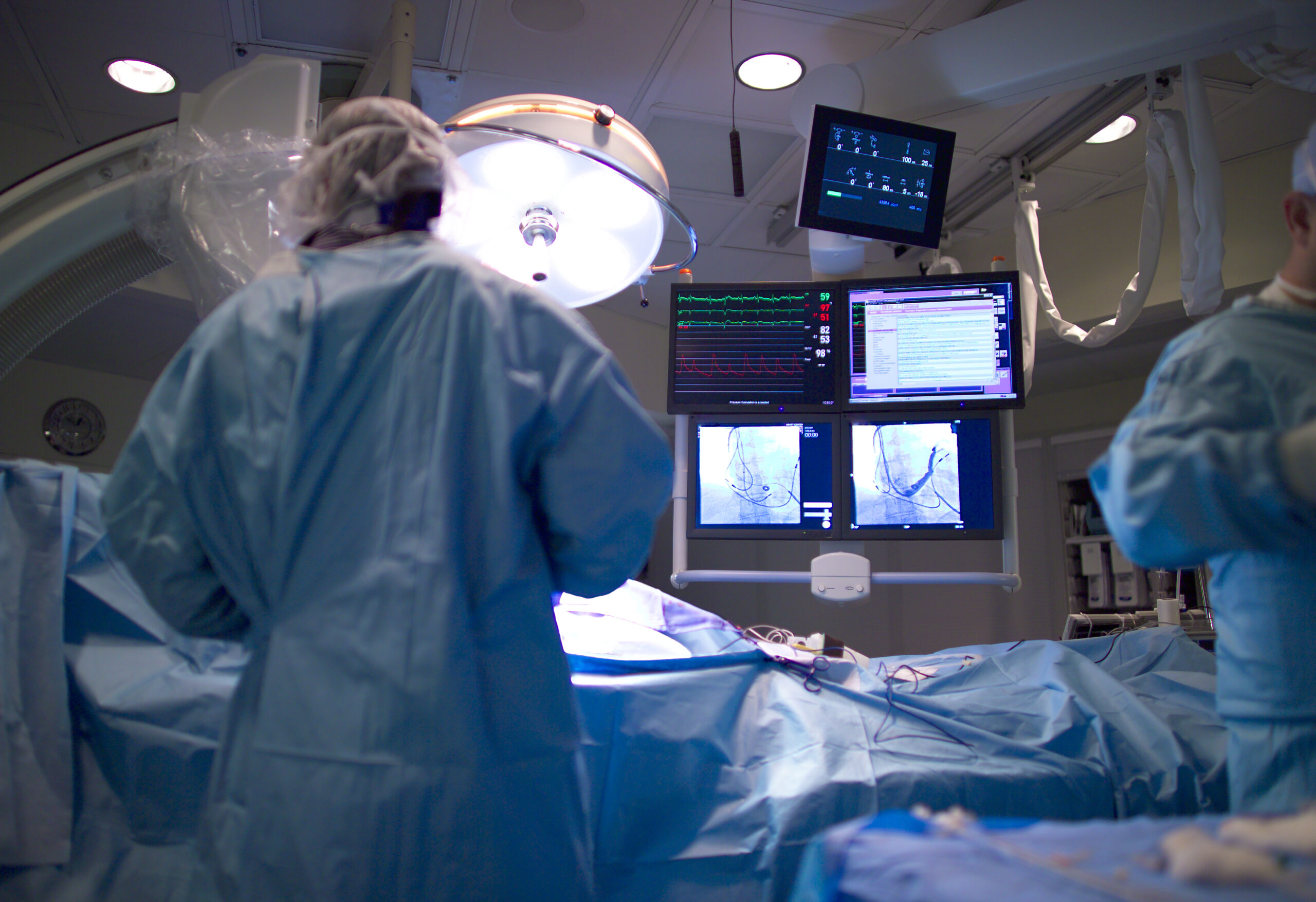Plasma medicine is a critical and specialized field within healthcare, centering on the use of human plasma for the development and administration of life-saving treatments. Human plasma, the clear, liquid portion of blood, is composed of water, electrolytes, nutrients and crucial proteins such as antibodies, clotting factors and albumin. These components make plasma an invaluable resource for treating various medical conditions, especially those that are rare and chronic. For example, immunoglobulins from plasma are used to treat immune deficiencies, clotting factors are crucial for individuals with hemophilia and albumin is administered to patients suffering from shock or liver diseases.

Chief Scientific Innovation Officer
Grifols
Grifols, with its roots tracing back to the early 20th century, has been instrumental in shaping this sector. From pioneering techniques in plasmapheresis (the separation and removal of plasma from the blood) to developing life-saving therapies for rare conditions, the company’s journey mirrors the evolution and advancements in plasma medicine.
In an exclusive interview with Xtalks, Jörg Schüttrumpf, Chief Scientific Innovation Officer (CSIO) at Grifols, sheds light on the company’s commitment to innovation in the global healthcare industry, particularly both in the plasma and non-plasma medicines sector.
This piece explores how Grifols continues to enhance the health and well-being of patients worldwide.
When people think about innovation drivers in global healthcare, they often think of “big pharma,” and not necessarily companies in the plasma medicines space. Why is Grifols — a global plasma company — prioritizing innovation, and what strategy enables it to do so?
Schüttrumpf: Certainly the conversations about healthcare innovation tend to revolve around a select handful of companies that aren’t in the plasma space. The plasma sector, perhaps because our therapeutics treat diseases and conditions that affect smaller patient populations, doesn’t draw as much attention. Grifols, though, has a rich history of innovation since it was founded in 1909, and there is considerable innovation in the works.
In fact, few people know that in the middle of the twentieth century we developed the plasmapheresis technique, still the gold standard worldwide for direct plasma donations (what’s known as source plasma). Patients have better quality of life thanks to many Grifols plasma-derived medicines that replace missing or deficient plasma proteins.
Innovation — pardon the obvious metaphor — is our lifeblood. It’s what permits us to fulfill our mission: to enhance the health and well-being of more patients around the world. Our implicit strategy of doing more for patients depends on continuous innovation. This permeates our strategic business decisions. We’re building an ecosystem of its own that combines rich internal expertise with innovation within the emerging biotechnology sector and academic field. Only by innovating in the types of therapeutics we develop and their indications can we deliver more medicines to more patients in more parts of the world.
What about Grifols and its approach to innovation convinced you to become its Chief Scientific Innovation Officer (CSIO)?
Schüttrumpf: To begin with, Grifols is a company with a centenarian history of innovating for patients and society. There’s a culture of curiosity and inquisitiveness that naturally lends itself to innovation. I also know the company well, given that Grifols and Biotest, where I’m still Chief Scientific Officer, have been collaborating for some time, particularly in developing new therapeutics. The team includes outstanding scientists and researchers around the world who look to push the boundaries of what’s possible to discover the next breakthroughs. It’s all part of a deep-seated commitment to innovation and its role as the company’s growth engine. I’m very excited to be leading the next phase in Grifols innovation.
Considering Grifols’ longstanding history in plasma-related treatments, your portfolio is rich in plasma-based therapies but supplemented by other approaches as well. Where are the company’s current innovation priorities?
Schüttrumpf: Grifols is a company with plasma at its core and for that reason biologics derived from plasma will remain a fundamental part of our innovation pipeline. This includes identifying new proteins with therapeutic value from the plasma proteome (the known universe of all plasma proteins). It also entails identifying new therapeutic targets for our existing plasma-derived medicines for which we have eminent expertise, including immunoglobulins, alpha-1 proteinase inhibitor, fibrinogen, albumin and antithrombin-III, for instance.
In addition, Grifols is expanding into non-plasma treatments to ensure patient needs across a range of therapeutic areas are addressed with the best treatment options. Our pipeline, for example, includes a new class of recombinant antibodies. Our indication priorities focus on fields in which we either have a deep expertise or in which our technology platforms offer clear advantage over any other technology. These include hematology, pulmonology, infectious diseases, hepatology, immunology, neurology, oncology and hopefully more to come.
The company’s commitment to innovation goes beyond therapeutics. Grifols is also dedicated to improving patient care through accurate diagnoses and maintaining the highest safety standards throughout the treatment journey. Our team is working to develop innovative solutions for blood and plasma donor screening, as well as the clinical diagnosis of diseases.
What are key pipeline initiatives for Grifols in the coming years?
Schüttrumpf: We’re excited about what’s coming down the road. Within the next few months we’re expecting topline results from a Phase III clinical trial on a next-generation fibrinogen, an important plasma protein essential for blood clotting. Our therapeutic advancement targets severe fibrinogen loss during intraoperative bleeding. Today standard of care features treatments such as cryoprecipitate and fresh frozen plasma that also include proteins and elements a patient might not need. The Grifols approach is precision medicine, the exact treatment for an exact need.
Next year we also expect results from other Phase III studies. One study is evaluating a new triple-action immunoglobulin called Trimodulin, designed to treat infections related to severe community-acquired pneumonia (sCAP). The other is evaluating the potential of long-term albumin treatment to increase survival time in patients with decompensated cirrhosis and ascites until a suitable transplant is available. We’re also excited about a Phase II study being outlined on an ocular surface immunoglobulin to treat dry eye disease.
This is just a quick snapshot of our pipeline developments. Our product portfolio spans various stages of development, featuring innovative therapeutic options such as recombinant polyclonal antibodies soon to enter the clinic, and new oncology treatments. There’s a lot going on across different therapeutic areas that can benefit from our experience in plasma medicines and other biologics.
As a global healthcare company, what is Grifols’ strategic innovation model for pipeline growth, meaning how do you balance internal R&D with external opportunities?
Schüttrumpf: Without a doubt, Grifols has an exceptionally talented and driven innovation team, where we invest a significant part of our innovation-focused resources. We enrich our internal strengths with external partnerships and alliances with leading companies, startups, universities and other institutions.
For example, we have a collaboration agreement with Google Cloud to accelerate our innovation, including AI technologies and large language models, to speed up the development cycle for new therapeutics. Grifols strategically looks at potential outside assets — new therapies or technology platforms — as potential investment or acquisition targets. This is how we came to own outright companies such as Alkahest and GigaGen, or acquire Biotest and Araclon. In fact, we have a dedicated team — Grifols Innovation and New Technologies, or GIANT — focused exclusively on scouting potential investments and acquisitions. It’s important to have a robust innovation ecosystem that includes strong internal and external elements.
Where do you see Grifols innovation and its accomplishments in the next five years? The next ten? What are the new opportunities for innovation that you see Grifols exploring in the future?
Schüttrumpf: There are a couple of moonshots on the drawing board that I can’t talk about but I will point out that over the next decade, we expect to see a lot more from the top-notch scientists at our GigaGen subsidiary. Right now, they are doing what is probably the most advanced work in the field of polyclonal recombinant antibody therapies.
The science is brilliant. These therapies consist of thousands of antibodies that are made in the laboratory versus being extracted from plasma, to treat disease with a diverse response, the same way a natural immune system would. To do this GigaGen uses industry-leading microfluidics technology to copy and recreate the immune responses of the best human donors for a particular disease such as hepatitis B. We’re also working with the US Department of Defense to develop polyclonal recombinants to treat neurotoxins, the result of which we hope will contribute to the development of therapeutics for high-priority pathogens.
We’re also very enthusiastic about a recent agreement between GigaGen and the National Cancer Institute to advance the development of our lead oncology drug candidate to treat cancer. This includes the first-in-human trial for the drug, an anti-CTLA-4 antibody with the potential to enhance anti-tumor activity and mitigate immune-related toxicities associated with traditional CTLA-4 blockade.
What’s the hardest thing about developing or sustaining a culture of innovation?
Schüttrumpf: In my experience, there are a few requirements. For starters, the executive leadership team has to demonstrate its commitment by clearly stating innovation as a priority and backing the affirmation with investment. Next, the team has to be innately curious and passionate about science and the thrill of discovery, especially when it’s about therapies or technologies that enhance people’s quality of life. Hiring the right kind of talent is fundamental. Thirdly, an organization must be well connected and networked to outside sources of learning and knowhow — partnerships, academia, etc. — thus infusing an organization’s work with fresh thinking and ideas. Fortunately for me, Grifols ticks all the boxes. In the end, innovation is about what comes next. There are no finish lines, just stops along the way to measure progress.












Join or login to leave a comment
JOIN LOGIN